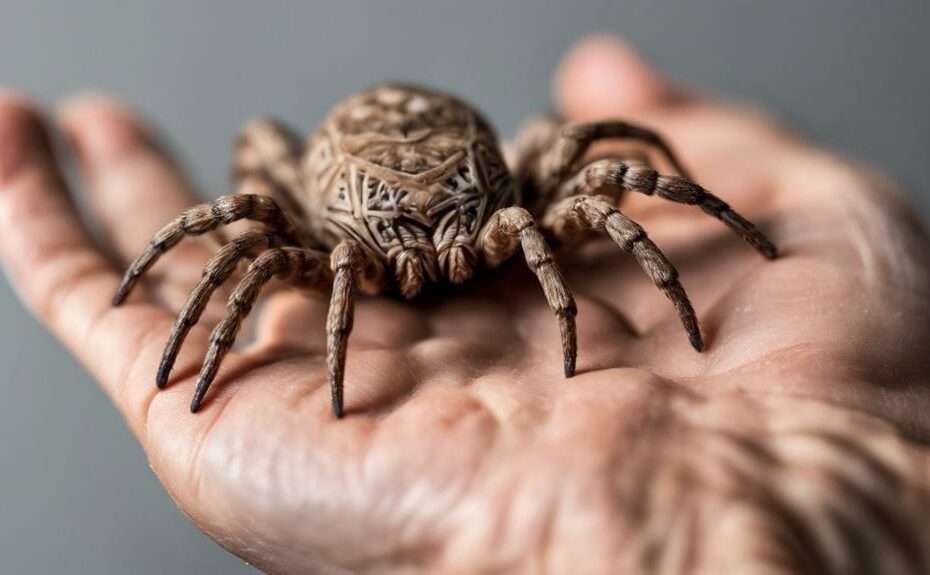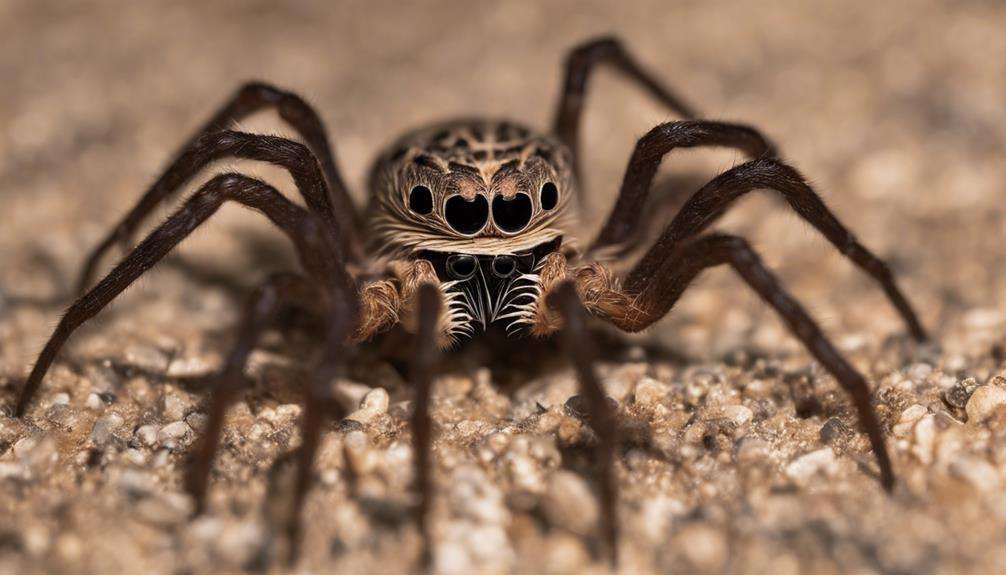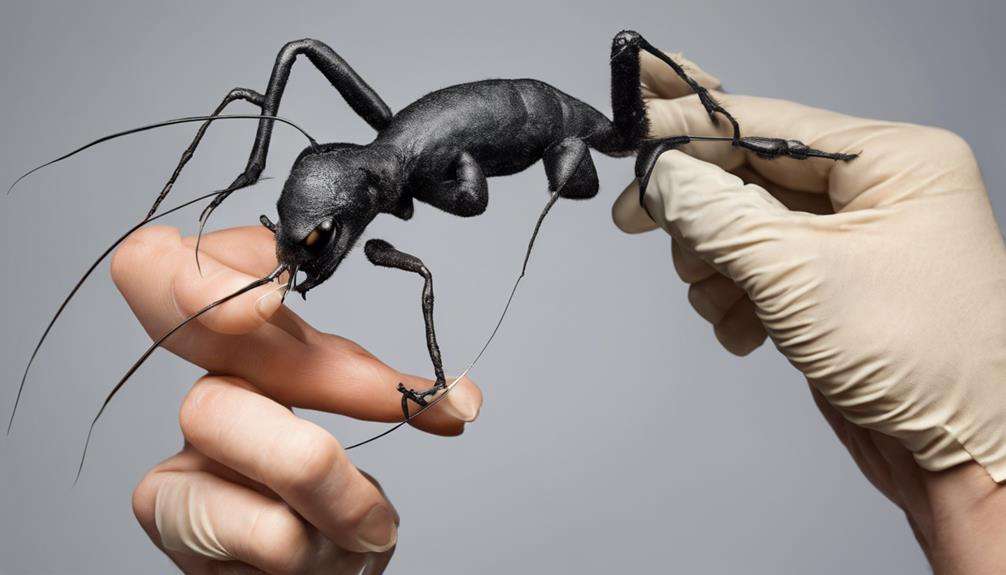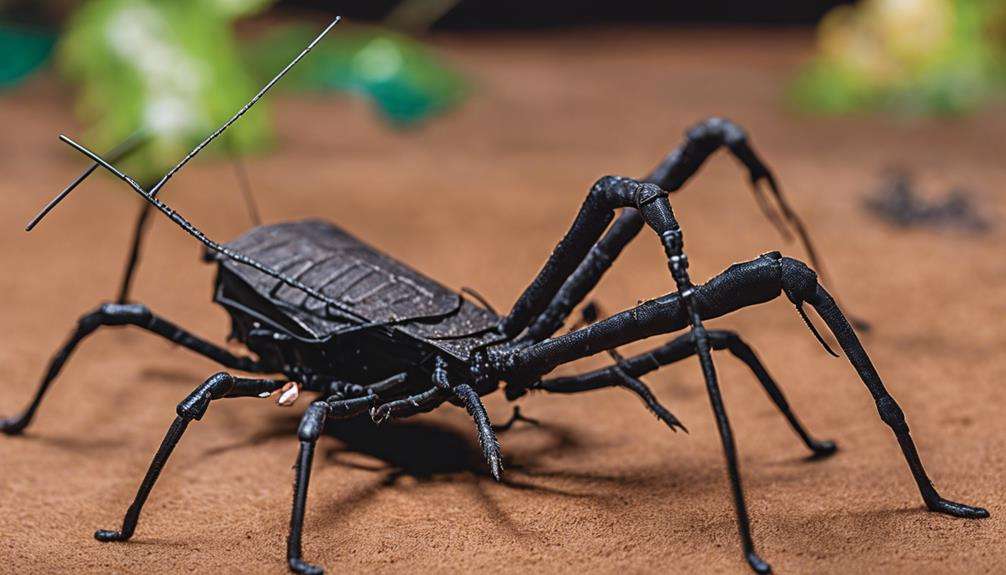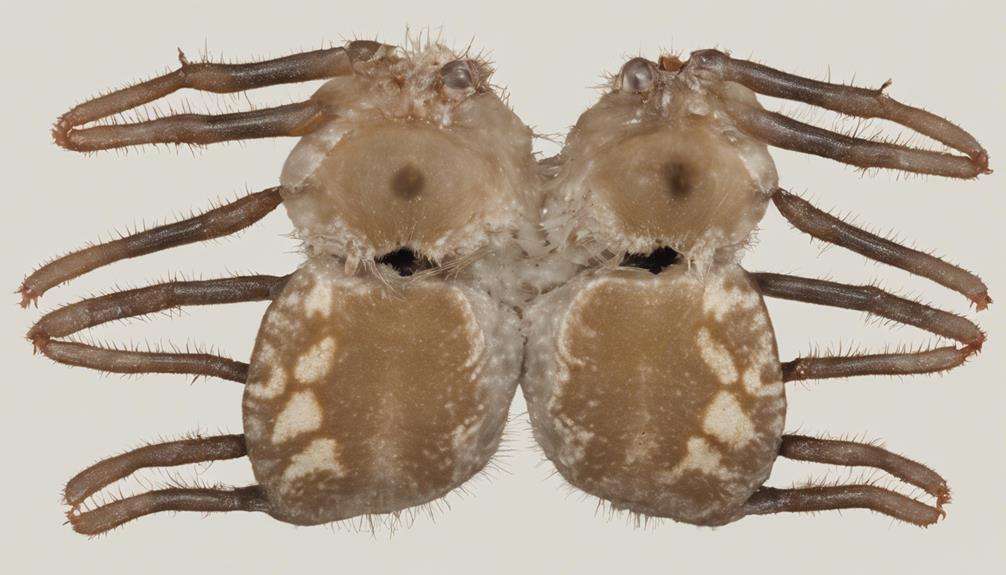Have you ever considered the idea of keeping a pet that combines the speed of a cheetah with the curiosity of a cat? Solifugids, or camel spiders, are captivating creatures that possess a blend of skills and behaviors that set them apart from traditional pets.
Their intricate feeding habits and mysterious mating rituals are just the beginning of what makes them such intriguing companions. Stay tuned to uncover more about the fascinating world of solifugids and why they might just be the unique pet you never knew you needed.
Key Takeaways
- Solifugids exhibit diverse feeding behaviors and impressive hunting skills.
- Their unique mating rituals and reproductive strategies are intriguing to observe.
- Territorial behavior and communication methods showcase their complex social dynamics.
- Solifugids' survival strategies and adaptations make them captivating pets for enthusiasts.
Unique Solifugid Feeding Behaviors
Solifugids exhibit remarkable feeding behaviors characterized by utilizing their chelicerae to dissect prey and introduce enzymes for fluid consumption. These creatures showcase a diverse diet and sophisticated hunting strategies, preying on insects, scorpions, and even other solifugids.
Their predatory nature is evident as they're voracious predators known for their exceptional speed, reaching up to 10 miles per hour to capture their prey relentlessly. Solifugids display adaptability in securing food sources by hunting and stockpiling ants, sometimes even excavating ant nests for shelter.
Their feeding habits highlight not only their efficiency as hunters but also their ability to thrive in various environments due to their versatile diet. The use of their chelicerae and enzymes allows solifugids to efficiently consume fluids from their prey, showcasing an intricate feeding mechanism that contributes to their survival and success as predators in the wild.
Mating Rituals of Solifugids
In exploring the intricate world of solifugids, the examination of their mating rituals unveils a realm of aggressive behaviors and unique reproductive strategies. Solifugids engage in intense mating behaviors characterized by jaw movements and physical manipulation. Male solifugids utilize their chelicerae to stimulate the female's reproductive organs, demonstrating distinctive reproductive strategies.
During mating interactions, males may remove competitors' sperm and press their genital openings against the female orifice. In response, females may enter catatonic states to endure mating and, in some cases, exhibit cannibalistic behaviors towards the male. These aggressive and unique strategies highlight the complex nature of solifugid reproduction.
Researchers often intervene during mating to prevent injuries and to study the intricate interactions between male and female solifugids. Understanding these behaviors provides valuable insights into the reproductive dynamics of these fascinating arachnids.
Solifugid Territorial Displays
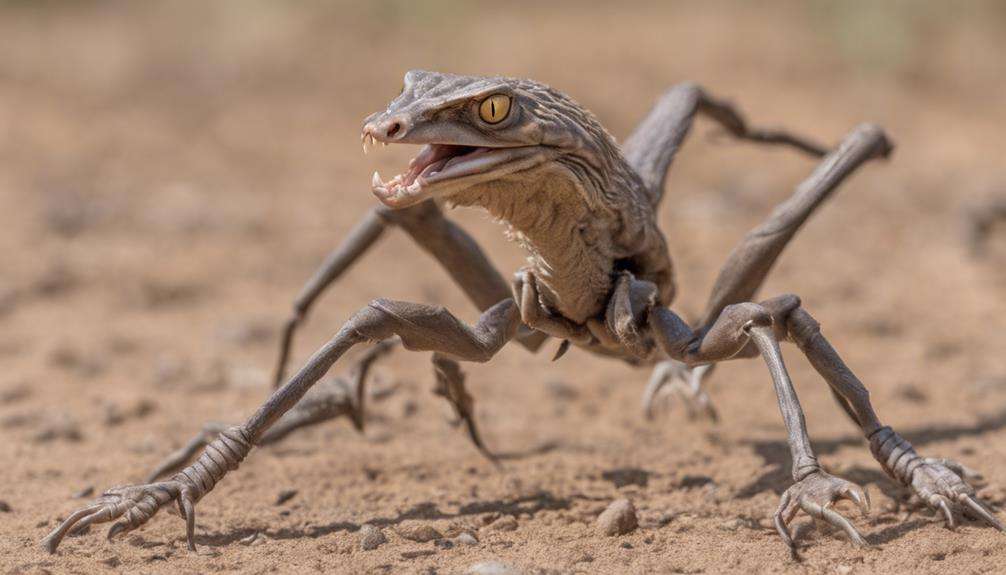
Exhibiting territorial displays through a combination of aggressive posturing and defensive behaviors, solifugids assert their boundaries using pheromones and physical confrontations with intruders. These displays serve to establish dominance and protect resources within their environment. Territorial disputes among solifugids can escalate to physical combat and dominance displays, where visual cues like raised pedipalps, open chelicerae, and rapid movements are common.
By marking their territories with pheromones, solifugids communicate their presence and deter potential intruders. The use of aggressive posturing and defensive behaviors not only helps in defending their territories but also plays a crucial role in social interactions within the solifugid community.
Understanding the intricacies of territorial behavior in solifugids provides valuable insights into their survival strategies and social dynamics in the wild. These behaviors highlight the complexity of solifugid interactions and emphasize the importance of territorial displays in their everyday lives.
Social Interactions Among Solifugids
When observing social interactions among solifugids, one can notice their minimal engagement with others, indicating their primarily solitary nature even in captive settings. Solifugids, being solitary creatures in the wild, may exhibit territorial behavior when housed together in captivity.
Social interactions among solifugids are often limited to mating encounters and potential conflicts over resources, as they don't engage in cooperative behaviors or form social bonds like some other arachnid species. Understanding these limited social interactions is crucial for preventing aggression and ensuring the well-being of solifugids in captivity.
Solifugid Communication Methods

Communication among solifugids involves a complex interplay of various methods. Tactile cues, such as leg tapping and antenniform leg movements, play a crucial role in conveying information between individuals. Chemical signals, like pheromones, are used to indicate mating readiness and demarcate territory boundaries. Vibrations are another essential communication method for solifugids, with specialized hairs on their bodies helping them sense these subtle cues in their environment. Additionally, solifugids communicate through visual cues, including changes in body posture and coloration variations, further enhancing their communication repertoire.
During interactions, solifugids engage in aggressive behaviors to communicate effectively. Mandible displays and chelicerae movements are common during mating rituals and territorial disputes, allowing for clear communication of intentions and boundaries. Understanding these various communication methods is vital for interpreting solifugid behavior accurately and appreciating the complexity of their social interactions.
Frequently Asked Questions
What Are the Unique Characteristics of Solifugae?
Solifugae, speedy predators, nocturnal hunters, with fearsome appearance. Desert dwellers, rapid movement, powerful jaws, interesting behavior, unique anatomy. They exhibit complex mating rituals, aggressive interactions. Solifugids lack venom glands, relying on sheer power and speed to hunt prey.
Is a Camel Spider a Good Pet?
A camel spider may seem intriguing, but as a pet, it poses challenges. Their care demands mimic a desert's conditions. Their swift movements and potent jaws make handling risky. They're wild creatures, best observed in their natural habitat.
Is a Solifugid a Spider?
A solifugid is not a spider; it belongs to the arachnid order Solifugae. Unlike spiders, solifugids lack silk-producing organs and build webs. They have unique chelicerae for prey, distinct respiratory systems, and sexual dimorphism.
Are Camel Spiders Aggressive?
Solifugids, like camel spiders, are not aggressive but will defend themselves if threatened. Understanding their behavior, care, feeding, and habitat is crucial. Respect their space, as myths about their aggressiveness are exaggerated.
Conclusion
As you observe the intricate dance of solifugids in their natural habitat, you can't help but marvel at their mysterious beauty. The way they move with lightning speed, hunting down their prey with precision, is a sight to behold.
Their complex mating rituals and territorial displays showcase a world of arachnid intrigue that captivates the imagination. Solifugids aren't just pets; they're enigmatic creatures that offer a glimpse into the fascinating world of arachnid behavior and ecology.
